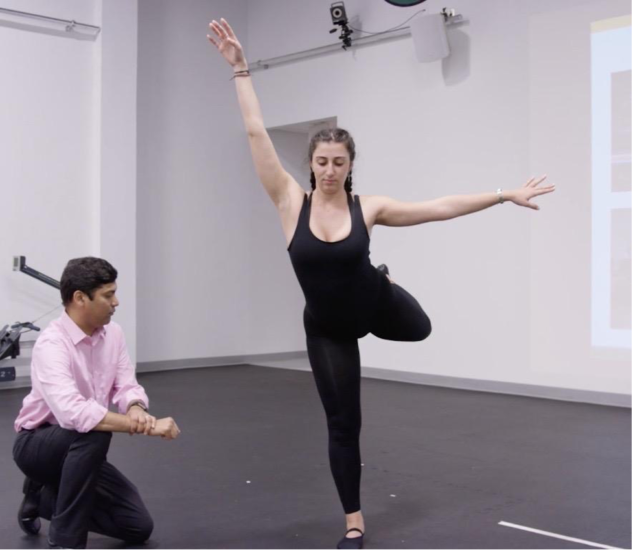
A team of George Mason University and University of Idaho researchers reported how dancers should adapt their nutrition throughout the year to meet varying seasonal energy demands, known as periodizing nutritional intake, in a recently published article in the journal Physical Medicine and Rehabilitation Clinics of North America. Periodizing nutritional intake helps the body optimize the fuel that it receives during physical training, and athletes can consciously focus their nutrition to meet their athletic goals.
Jatin Ambegaonkar, a professor in the School of Kinesiology and founding co-director of the Sports Medicine Assessment Research and Testing (SMART) Laboratory at George Mason University, led this study in collaboration with Ann Brown of the University of Idaho. Both investigators are members of Mason’s Supporting Healthy Arts Research (SHARE) Consortium, which was founded and is led by Ambegaonkar. The consortium brings together practitioners from nine universities nationwide who are committed to improving performing artists’ health.
The Institute for Biohealth Innovation interviewed Ambegaonkar to better understand his research.
Q: What are the biggest takeaways from your recent findings?
A: Let’s start with the big picture: We have recognized physical activity comes in different forms, so the nutrition that you take in through diet and hydration needs to match up with the physical activity output. Whether you are an athlete or a nonathlete who is physically training for a goal, often the training regimens include different types of strength training and cardiovascular exercise. Athletes frequently do not consciously think about the nutritional aspect, which needs to match the highs and lows experienced by the body when performing activity and exercise.
Q: Why did you choose dancers as the population for your research?
A: With my background as an athletic trainer, I started working with a special population called “aesthetic athletes.” These are athletes who do artistic work and physically demanding tasks. There has been very little scientific research behind treating this population because they have historically been considered as artists and not athletes. Over the past 15 years, I’ve tried to understand what factors contribute to a healthy dancer and performing artist. This project was focused on the different components of health, specifically nutrition. We started thinking about how we could use some of the principles we know from exercise and sports medicine and apply them to these “aesthetic athletes.”
Q: Would your research findings be beneficial to other populations outside aesthetic athletes?
A: Yes, absolutely! The principles that we discuss in the project are applicable to anyone who is physically active. We primarily talk about aesthetic athletes, but this specialized area of knowledge has broader applications. For example, this information can be easily adapted to anyone who is doing strenuous physical activity. If someone is training for a 5K, they can set a five-month goal and start periodizing their nutrition intake as they train for longer distances. So, this work has broad applications for all physically active people across the lifespan.
Q: Did students assist with this research and how can someone contact you if they are interested in participating in the future?
A: Yes, we worked with a group of undergraduate, master’s, and PhD students who worked across the continuum of the project from reviewing previously published literature to conducting the research study and interpreting the findings. Our intention is to help our students become critical thinkers and research-savvy practitioners. They learn firsthand how the research process works, and play an important role in sharing new knowledge that serves the general population.
As we closed the conversation, Ambegaonkar shared how much he values collaborations with other Mason investigators in the SMART Laboratory and across the university via the IBI including the College of Visual and Performing Arts and the College of Humanities and Social Sciences. Anyone interested in learning more should contact him at [email protected].
March 30, 2021
